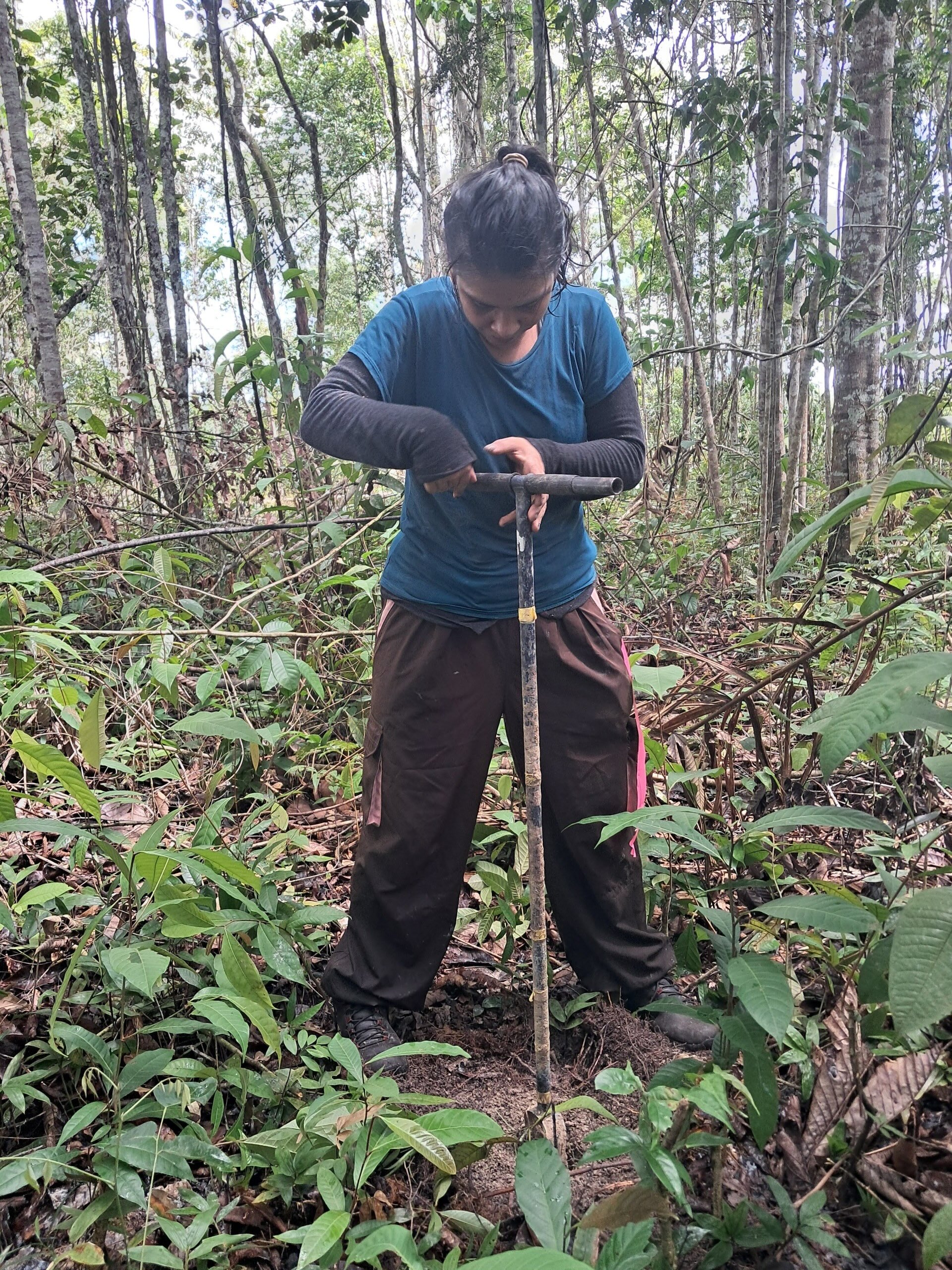
Posted by Ted Feldpausch
19 March 2025The Amazon rainforest, an important carbon sink, faces increasing threats from deforestation and wildfires. But what happens to the soil carbon after these disturbances? MSc student, Lorena Fleury, in the Tropical Forest Science Postgraduate Programme at the National Institute for Research in Amazonia (INPA), supervised by Prof. Ted Feldpausch, has been sampling soil in secondary forests in central Amazonia to answer this question.
The research is part of the Amazon PyroCarbon Project (NERC/FAPESP), a collaborative effort between NERC (Natural Environment Research Council) and FAPESP (São Paulo Research Foundation). This project aims to understand how forest degradation, wildfire, and climate change affect soil carbon storage, with a focus on understanding the formation of pyrogenic carbon (black carbon) produced by wildfires.
Fieldwork
Fieldwork for the study is being carried out at farms with secondary forests regrowing on abandoned pastures along the BR 174 highway north of the Amazon River near Manaus (2°34’S, 60°02’W and 2°20’S, 60°04’W). Lorena and her team are collecting soil with a soil auger to 1 m depth in soils.
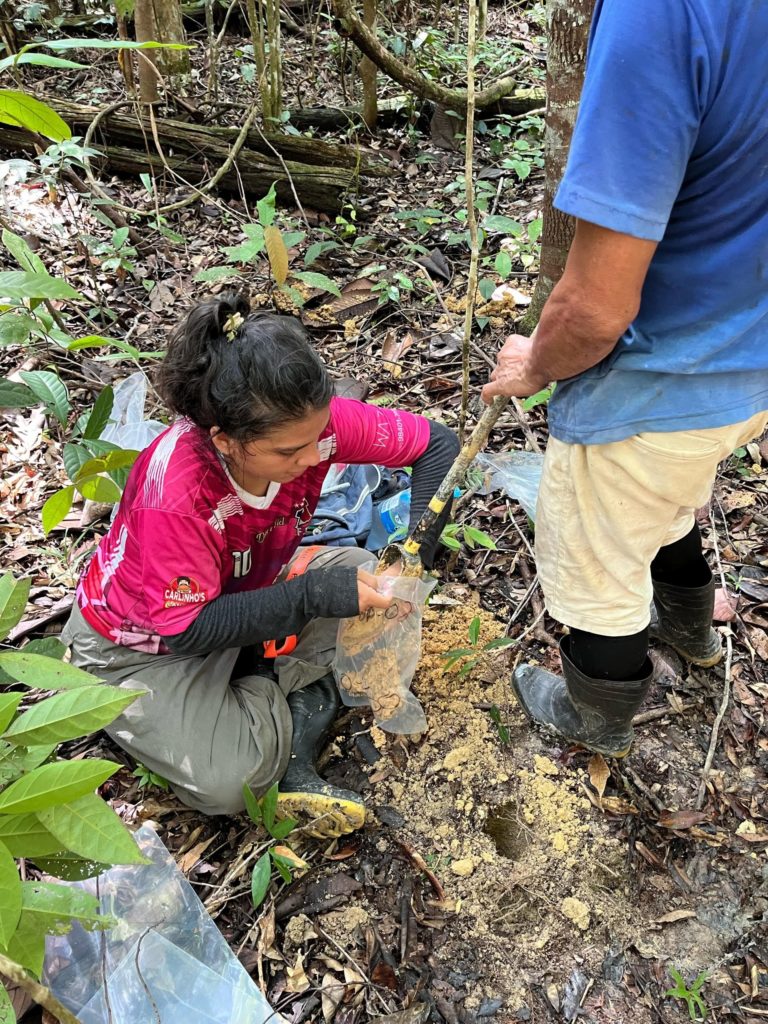
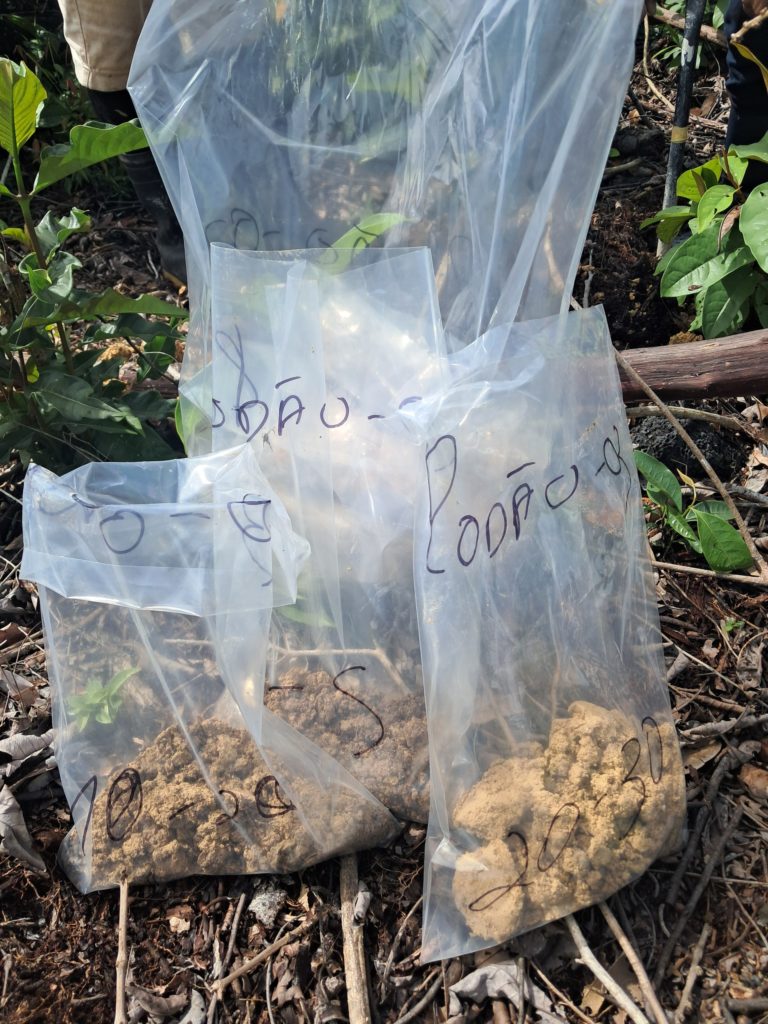
Images: Sampling soil in post-pasture secondary forests in central Amazonia (photo credit: Lorena Fleury)
Why Focus on Soil Carbon?
Soil is a large reservoir of carbon, and understanding its dynamics is essential for predicting the response of Amazonian forests to land-use change and future climate scenarios. In the Amazon, soils are primarily nutrient-deficient, and fires change their fertility, structure, and carbon storage. Wildfires introduce pyrogenic carbon, a stable form of carbon, into the soil, but the long-term implications of this process are still being investigated.
Key Research Questions:
The Importance of This Research
Lorena’s research will provide valuable insights into the resilience of Amazonian ecosystems and the potential for secondary forests to sequester carbon. By understanding the fate of soil carbon after wildfires, we can better inform conservation efforts and develop strategies to mitigate climate change.
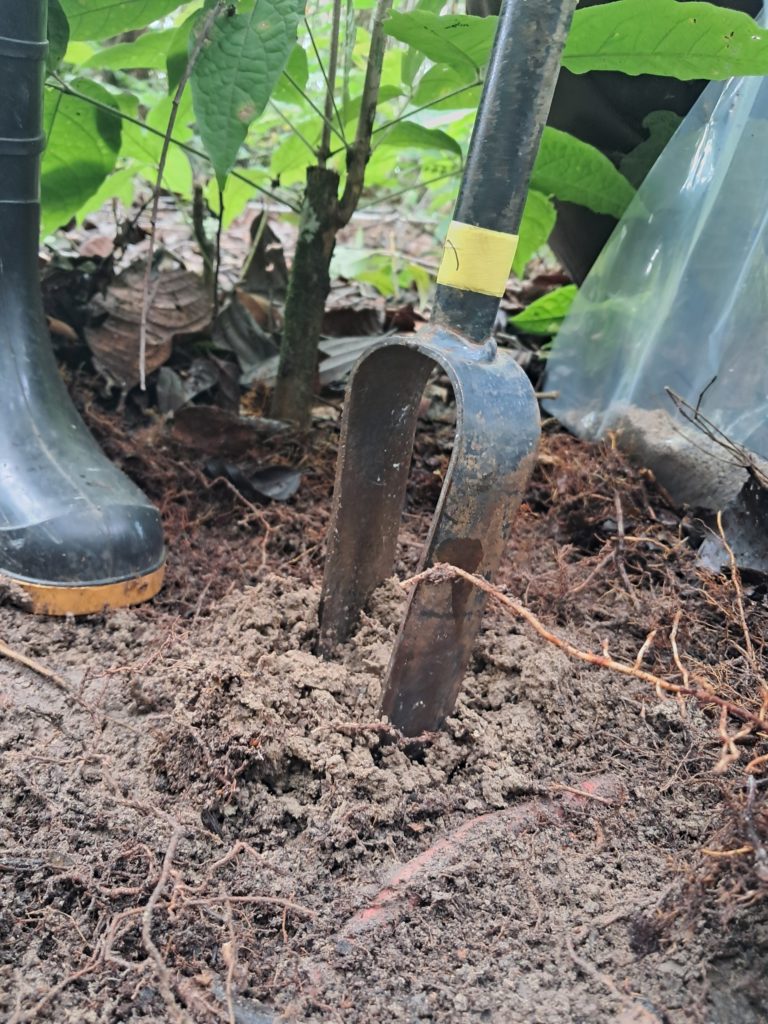
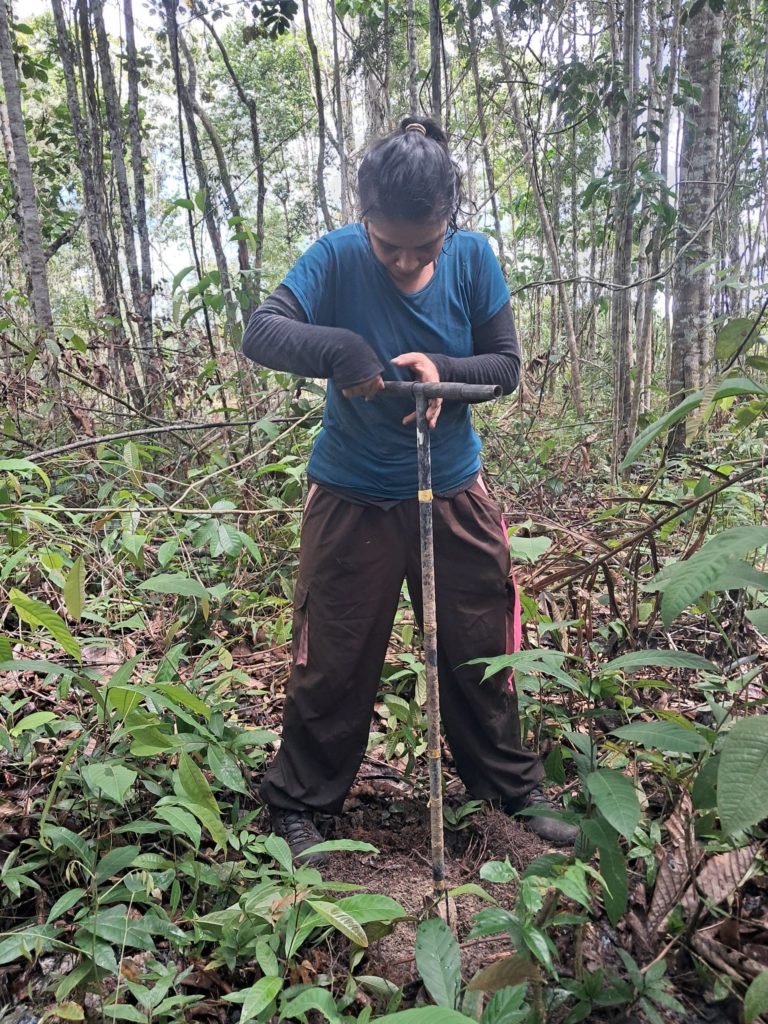
Image: Soil samples collected to analyse post-fire changes in soil carbon (photo credit: Lorena Fleury)